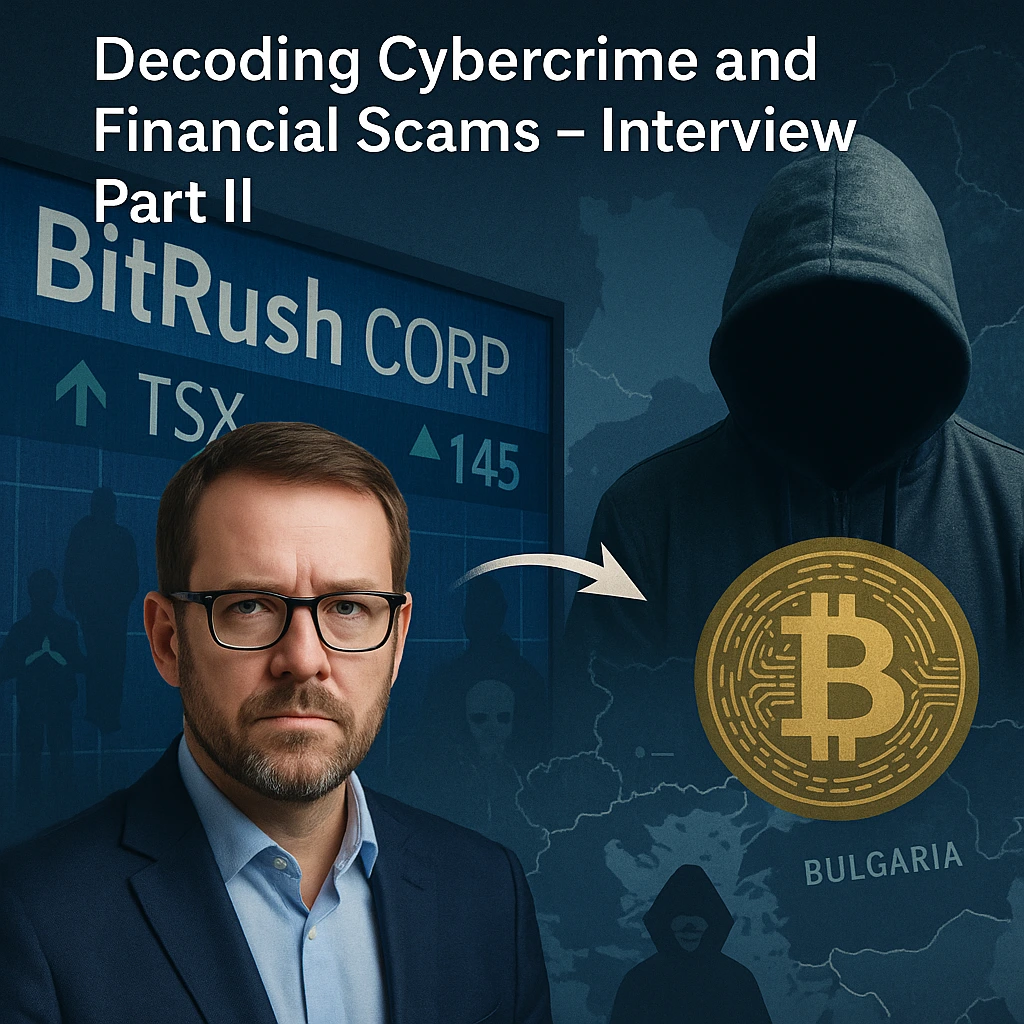Q6: What was the connection between BitRush and the Lenhoff case?
Joachim Kalcher, formerly the Chief Technical Officer at BitRush Corp, reportedly maintained cooperation with Uwe Lenhoff despite known allegations of financial misconduct. Although BitRush Corp was ultimately not used for unlawful activities, Kalcher later signed a contract with Lenhoff’s entity Veltyco and relocated to Bulgaria, where he contributed to the development of crypto-based payment infrastructure. As a result, Kalcher has been named as a suspect in proceedings related to the Lenhoff network.
BitRush Corp became inactive after failing to meet reporting obligations, leading to a trading suspension by the Toronto Stock Exchange. Although the company is no longer operational, its early association with certain individuals remains a subject of ongoing interest.
Q7: Is it true that threats were issued during the investigations?
Yes. During the course of investigations into financial misconduct, credible reports of threats emerged. It was revealed through police documentation that an individual associated with the scheme allegedly solicited an attack through external contacts. Authorities were informed, and protective measures were briefly implemented.
Q8: How does the victim support and recovery initiative operate?
The initiative is structured as a non-profit organization focused on consolidating victim claims, facilitating legal filings, and pursuing both criminal and civil proceedings. Beyond restitution, its objective is to help expose systemic weaknesses that enable large-scale fraud, including financial institutions, payment processors, and digital ad platforms.
Efforts include collaboration with litigation funders and attorneys across jurisdictions. Membership is structured with a modest fee model, with some exceptions, and outcomes often rely on contingency-based success fees. Activities include:
-
Case analysis and claim aggregation
-
Engagement with law enforcement and regulators
-
Forensic review of financial documentation
-
Reporting misconduct to relevant authorities
Q9: Have there been any campaigns targeting these efforts?
Yes, there have been attempts to discredit individuals and groups involved in financial investigations. This includes defamatory websites, misinformation on social media, and impersonation through fake articles and graphics. These actions appear to be aimed at disrupting ongoing legal efforts and undermining the credibility of those involved in exposing financial crime.
Despite these efforts, legal proceedings have resulted in notable arrests and convictions across several countries, particularly related to binary options fraud. In addition, documentation recovered through these investigations has provided significant insight into how these schemes were structured.
Q10: What is your outlook on fighting financial cybercrime?
Recent progress in European jurisdictions—particularly in Germany and Austria—shows promising momentum in the battle against organized investment fraud. Prosecutors and cybercrime units are increasingly taking decisive action, including forming cross-border task forces and investigating support structures such as call centers and financial intermediaries.
To enhance these efforts, several steps are necessary:
-
Increased accountability for banks and payment service providers
-
Stricter oversight of digital platforms enabling fraudulent advertising
-
Improved cooperation among EU cybercrime units
-
Enhanced tools for asset recovery and victim compensation
Though challenges persist, particularly in countering misinformation and regulatory inertia, continued legal actions are gradually making the landscape less hospitable for organized fraud networks.


